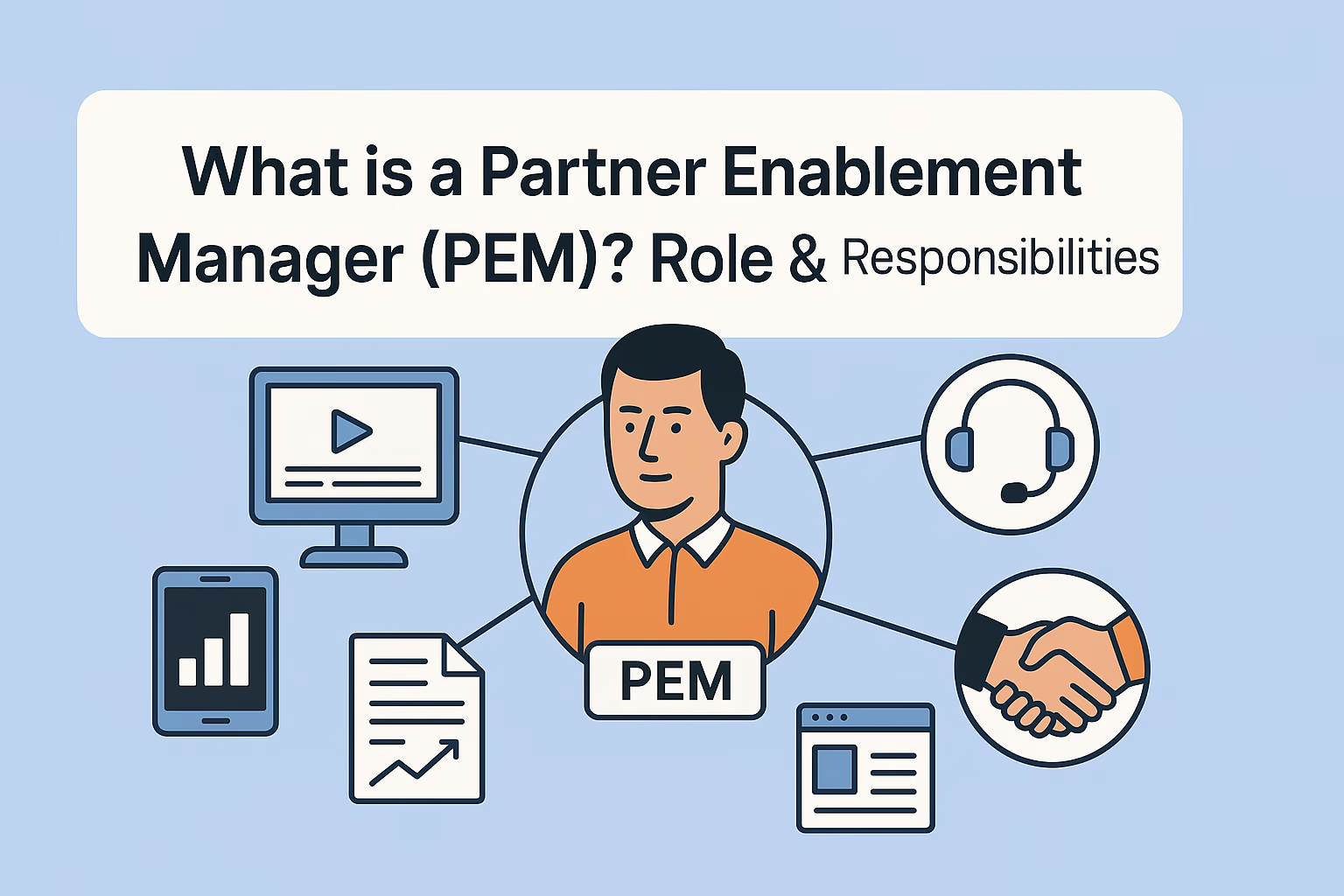Partnerships are no longer a side project—they are a core engine for growth. Companies in competitive sectors like SaaS and technology rely on indirect revenue streams from partner ecosystems to expand their market reach and accelerate revenue. But a signed contract doesn’t guarantee a successful partnership. Many programs fail to unlock their full potential because partners aren’t effectively activated, trained, or supported. This is where the Partner Enablement Manager (PEM) becomes essential. The Partner Enablement Manager is the architect of partner success. They bridge the gap between signing a partner and seeing that partner generate real-world results. This post will explore the PEM role, its core responsibilities, the skills needed to excel, and how this function drives strategic growth in a modern B2B environment.
What is a Partner Enablement Manager?
Partner enablement is the ongoing process of giving your channel partners everything they need to succeed. This includes resellers, distributors, ISVs, MSPs, and agencies. The goal is to equip them with the tools, training, and support to effectively market, sell, and service your company’s products. It’s about empowering them to become a true extension of your team. The Partner Enablement Manager (PEM) is the professional who designs, builds, and runs these enablement programs. They are the facilitators of partner readiness, focused on building strong relationships that drive mutual growth. This role is especially critical in B2B companies that use indirect or channel sales models to reach customers.
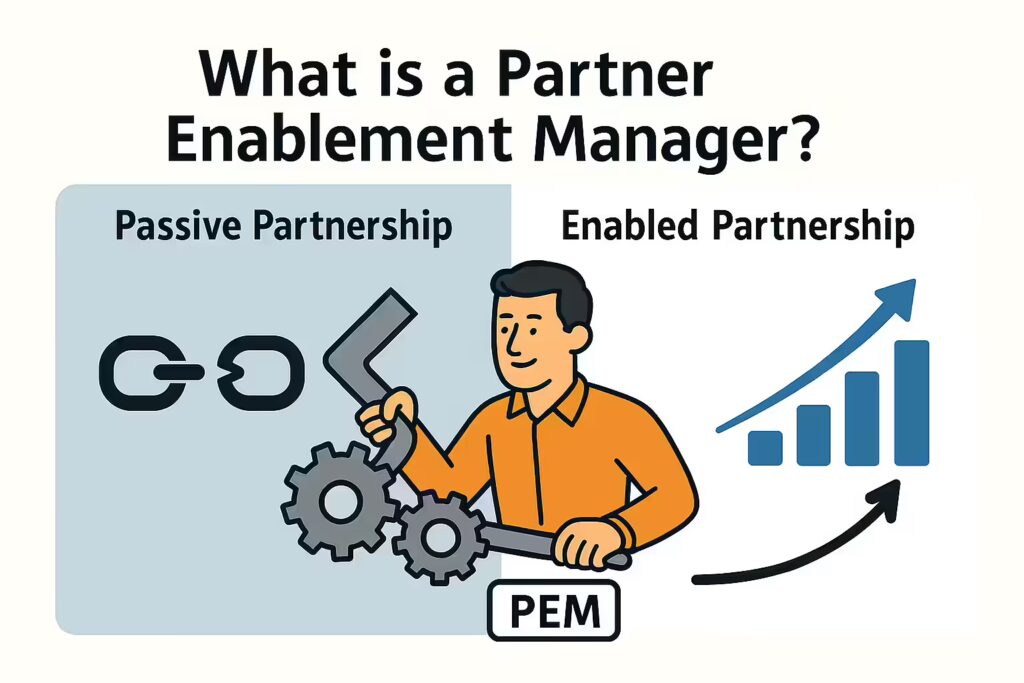
Key Takeaway:
The rise of the PEM role shows a strategic shift in business: passive partnerships don’t work. Active, dedicated enablement is what unlocks the ROI of your indirect channels.
Partner Enablement Manager vs. Related Roles
While the PEM works closely with other partner-facing roles, their focus is distinct. Understanding these differences clarifies the PEM’s unique value.
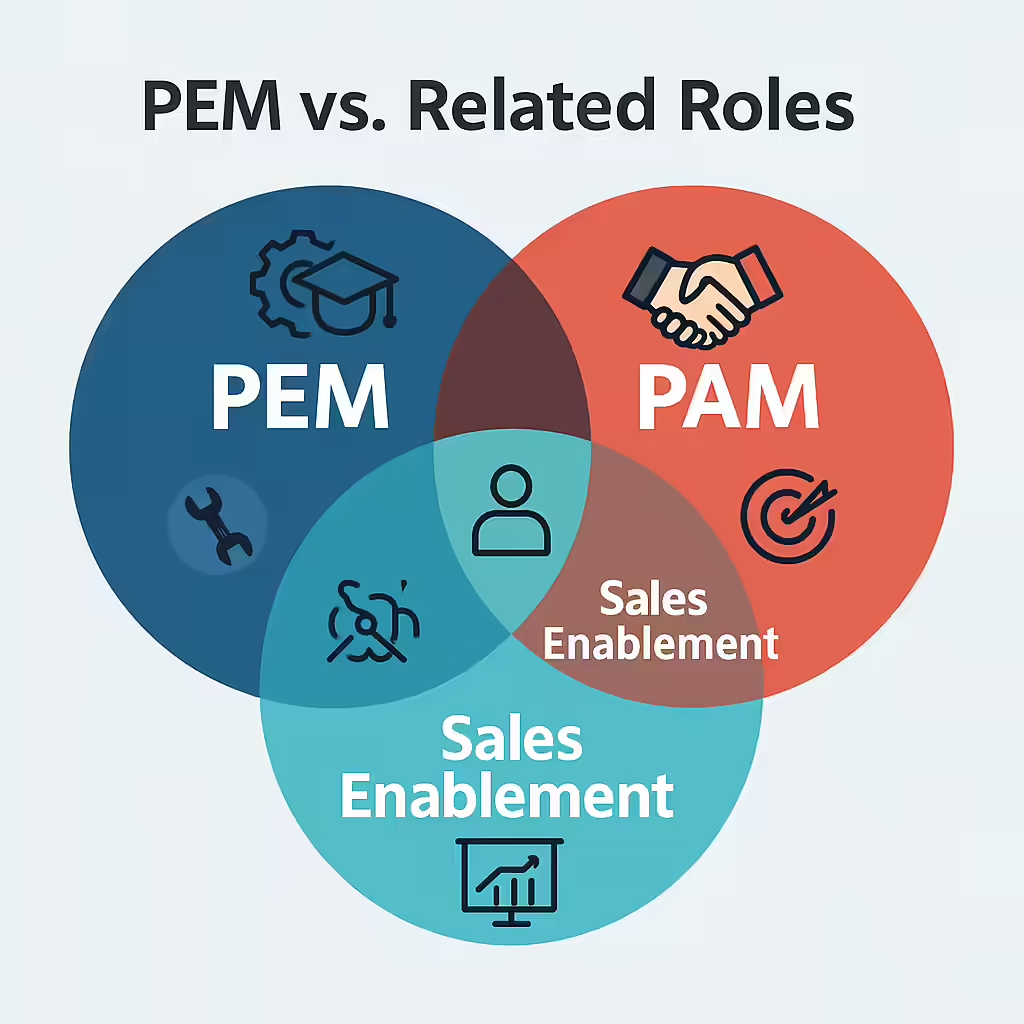
| Role | Primary Focus | Key Responsibilities |
|---|---|---|
| Partner Enablement Manager (PEM) | Equipping and training partners for success. | Designs training programs, creates sales/marketing resources, manages onboarding, and develops skills across the entire partner ecosystem. |
| Partner Account Manager (PAM) | Managing the commercial relationship with a portfolio of specific partners. | Focuses on relationship health, strategic alignment, and hitting revenue targets with their assigned partners. |
| Sales Enablement Manager | Equipping the company’s internal, direct sales team. | Adapts internal training, content, and sales processes for the direct sales force. |
A PAM can’t effectively drive revenue if their partners don’t understand the product or how to sell it. The PEM provides the essential “how-to” knowledge and resources that allow the partners managed by the PAM to hit their goals.
Ready to improve how your partner-facing teams communicate?
What Does a Partner Enablement Manager Do Day-to-Day?
The daily responsibilities of a PEM revolve around one central goal: ensuring partners are ready, willing, and able to succeed. This involves a continuous cycle of strategy, execution, and optimization.
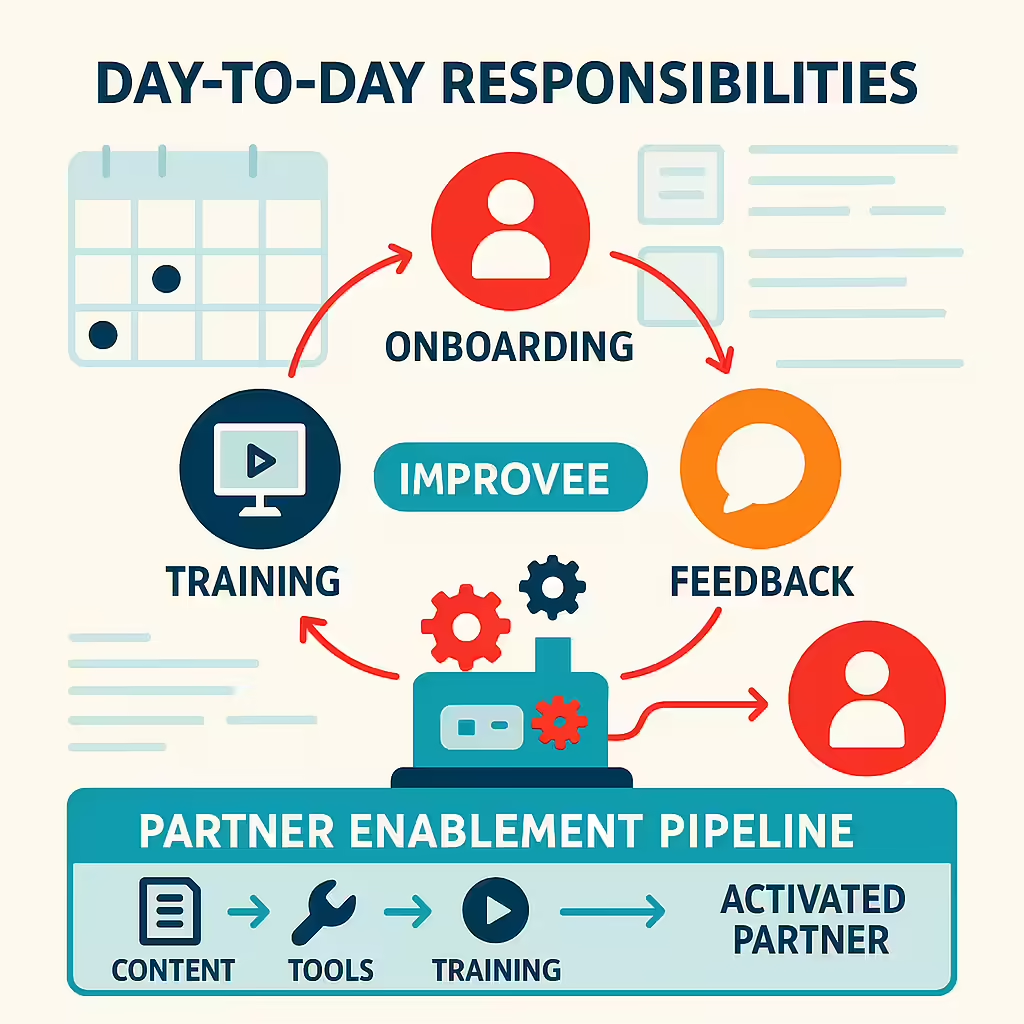
Designing Enablement Programs
This is the strategic core of the job. PEMs build the entire enablement framework, including structured learning paths and certification programs tailored to different partner types (e.g., sales vs. technical roles).
Onboarding and Training New Partners
A PEM develops and delivers comprehensive onboarding to get new partners up to speed on company values, products, and sales processes. They facilitate ongoing training through webinars, e-learning modules, and workshops.
Creating and Managing Resources
PEMs are responsible for the arsenal of tools partners need. This includes sales collateral like battle cards and case studies, technical documentation, and co-branded marketing materials. They typically manage the partner portal where all these assets are stored.
Monitoring Performance and Gathering Feedback
It’s not enough to provide resources; PEMs must measure their impact. They track partner engagement with training and content, analyze performance data, and gather direct feedback to continuously improve the program.
Building Relationships and Providing Support
While the PAM owns the commercial relationship, the PEM is a key point of contact for enablement questions, demo support, and strategic guidance.
This wide range of duties highlights a key challenge: scalability. Effectively managing these tasks across a diverse partner base requires efficient processes and the right technology, like Partner Relationship Management (PRM) platforms and integrated communication tools.
Core Skills Every Partner Enablement Manager Needs
A successful Partner Enablement Manager is a hybrid professional who blends strategic thinking with hands-on execution. They need a unique combination of soft, technical, and business skills.
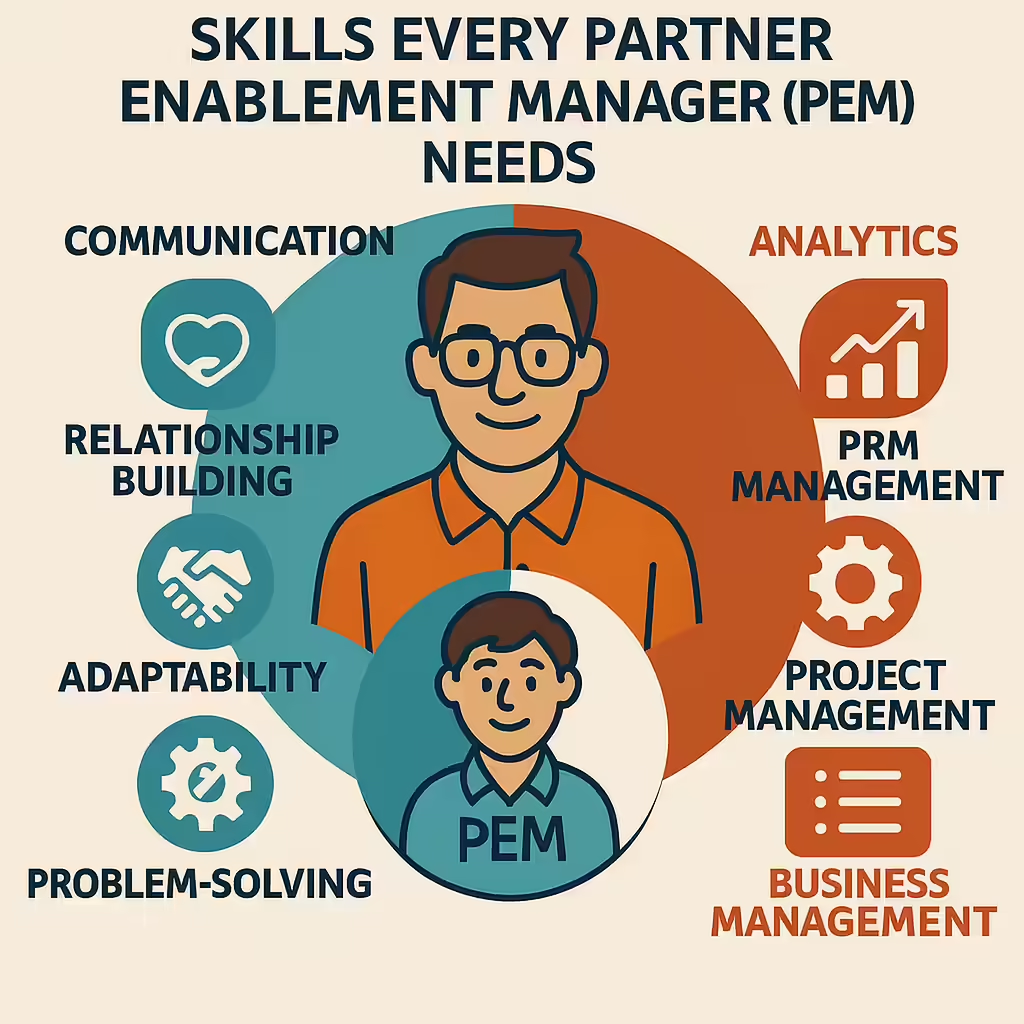
| Skill Category | Essential Competencies |
|---|---|
| Communication & Interpersonal | Exceptional verbal and written communication is non-negotiable for delivering clear training and building trust with partners and internal teams. |
| Training & Content Development | The ability to design effective training programs and create engaging, accessible content is a core competency. A passion for teaching and coaching is a major asset. |
| Program & Project Management | PEMs must be masters of organization, able to manage multiple complex projects simultaneously to ensure programs are delivered on time and meet their goals. |
| Analytical & Problem-Solving | The ability to analyze data to measure program effectiveness, identify partner challenges, and make data-driven decisions is crucial. |
| Business & Technical Acumen | A solid grasp of the company’s products and the partners’ business models is vital to tailor enablement that contributes to mutual success. |
| Collaboration & Adaptability | Success hinges on the ability to work across internal departments (Sales, Marketing, Product) and adapt to changing priorities and partner needs. |
Individuals often move into PEM roles from backgrounds in channel management, sales enablement, corporate training, or product marketing, typically in the tech/SaaS sector.
Looking to build a high-performing partner team?
How Partner Enablement Drives Revenue and Strategic Growth
Investing in a dedicated PEM is a strategic move that delivers significant business value far beyond just creating training materials.
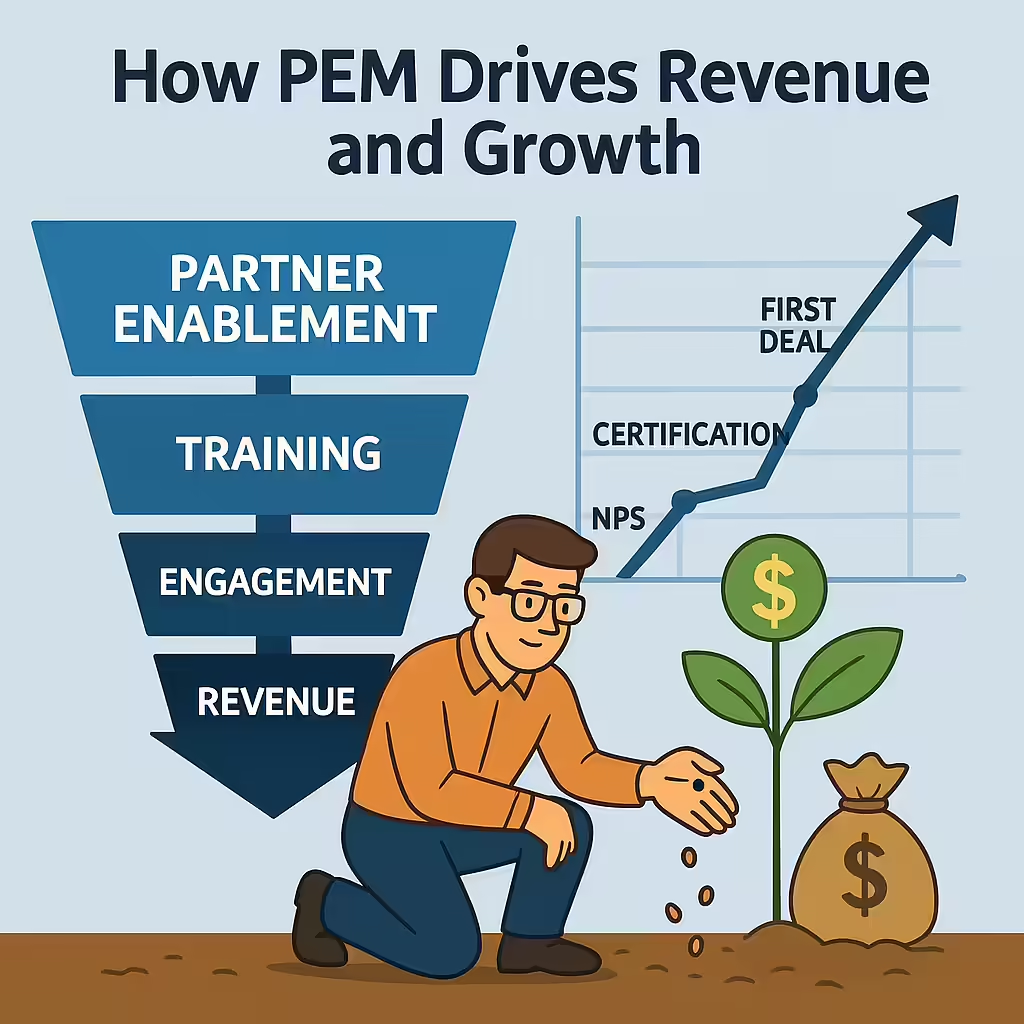
Accelerates Revenue
This is the primary goal. Well-enabled partners sell more effectively and confidently, which directly translates to increased partner-driven revenue and more predictable sales outcomes.
Enables Scalable Growth
Partnerships are a powerful way to enter new markets without the high cost of building a direct presence. Enablement is the engine that activates these partners, allowing the business to scale efficiently.
Builds Partner Trust and Loyalty
A strong enablement program shows partners you are invested in their success. This builds the trust needed for deeper strategic collaboration and makes them more likely to prioritize your products.
Enhances Customer Satisfaction
Partners are often the face of your brand to the end customer. Properly enabled partners provide a better customer experience, leading to higher satisfaction, better retention, and a stronger brand reputation.
Improves Operational Efficiency
When partners are equipped with self-service resources, they become more autonomous and require less hand-holding from internal teams, reducing the support burden.
Common Partner Enablement Challenges (And How to Solve Them)
Even the best PEMs face common hurdles. Navigating these challenges is key to building a successful program.
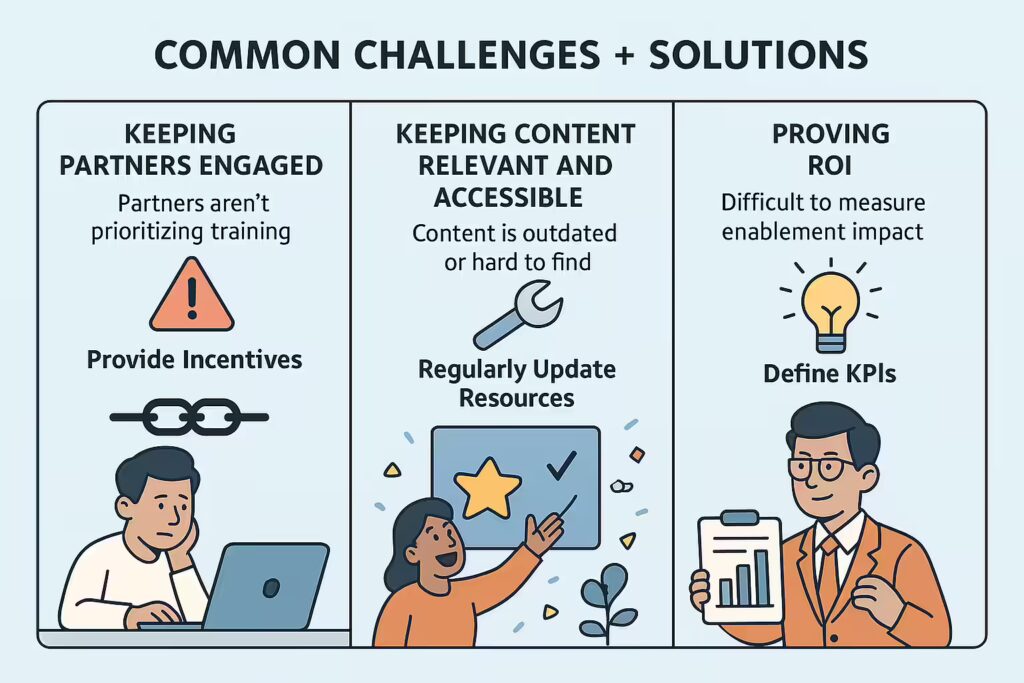
1. Challenge: Keeping Partners Engaged
Partners have competing priorities. Getting their attention and commitment to training can be a constant struggle.
Solution: Clearly show them “what’s in it for them.” Offer tangible incentives for completing training, make resources easy to access, and build strong personal relationships to foster loyalty. Actively listen to their feedback and show them you’re making improvements based on their input.
2. Challenge: Keeping Content Relevant and Accessible
A one-size-fits-all approach to content doesn’t work. It’s difficult to create resources that meet the needs of diverse partners and even harder to ensure they can find and use them.
Solution: Segment partners by type or role to create tailored content. Use a centralized and well-organized partner portal. Implement a regular content review process to keep everything up-to-date and track usage metrics to see what’s working.
3. Challenge: Proving ROI and Securing Buy-In
Enablement is a long-term investment, but pressure for short-term results is common. Proving the value of your programs is essential for securing the budget and resources you need.
Solution: Define and track clear KPIs that connect enablement activities to business outcomes. Align your program goals with broader company objectives and report regularly on your progress and successes to leadership.
Measuring What Matters: KPIs for Partner Enablement Success
To prove value, you have to measure it. Tracking the right Key Performance Indicators (KPIs) shows how enablement efforts are impacting partner performance and overall business goals.
A balanced approach uses a mix of leading and lagging indicators.
| KPI Category | Specific KPI Example | What it Measures |
|---|---|---|
| Engagement & Activity (Leading) | Training Course Completion Rate | The percentage of partners completing assigned training modules. |
| Competency & Readiness | Certification Completion Rate | The percentage of partners achieving required certifications, proving knowledge acquisition. |
| Performance & Business (Lagging) | Partner Time-to-First-Deal | How quickly a new partner becomes productive and generates revenue. |
| Performance & Business (Lagging) | Partner-Influenced Revenue | The amount of revenue generated from deals where an enabled partner played a key role. |
Analyzing how your top-performing partners engage with enablement can help you identify which activities are most predictive of success.
Empowering Partners is Empowering Growth
The Partner Enablement Manager role is a complex and highly strategic function that is critical for any company serious about growing through indirect channels. They are far more than just support staff; they are the architects of a high-performing partner ecosystem.
By investing in dedicated enablement, businesses build the foundation of trust and competence required for true partnership. Empowering your partners to sell, market, and succeed is one of the most effective ways to empower your own growth.
Effective communication is the bedrock of partner success. See how Kixie’s automated calling and texting platform helps Partner Enablement Managers and PAMs build stronger connections, streamline workflows, and drive more channel revenue.


